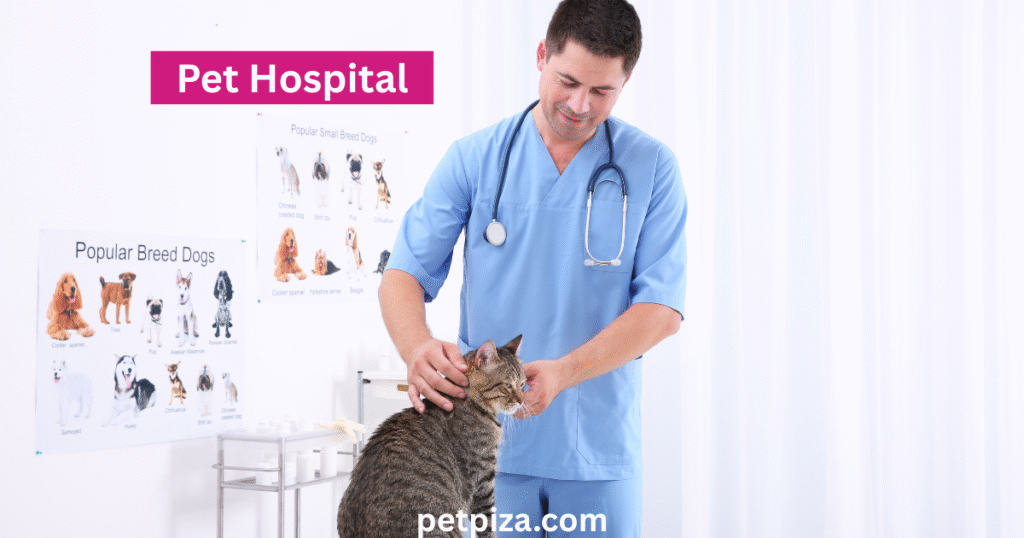Your pet’s health and well-being take precedence pet hospital. All your pet’s check-ups & unforeseen emergencies require a dependable and reliable source. One solution is a pet hospital that services both scheduled vet visits and emergency pet care. A definition of everything to these facilities offer as well as appropriate decision making will help empower your pet in both calm and crisis.
Your pet deserves compassionate care more than anything. Understanding the difference between a vet and a vet surgeon will help you rest at ease. There are some common procedures and routine examinations that every dog parent must know. They will help meet the need in every situation.
What a Full-Service Pet Hospital Offers
A Comprehensive Pet Hospital will not limit its services to Annual Vaccination and Pet Check Ups. Rather, a complete and integrated approach will allow a single practice to keep track of a pet’s health diagnostics, treatment, and preventative healthcare as well as holistic measures its entire life. This helps keep the history of care continuous as the entire team responsible for the wellness visit also helps during the emergencies.
- The standard services typically include the following.
- Energizing and active life: Preventive and wellness care.
- Immediately obtaining accurate diagnostics from: Quick accurate diagnostics.
- Oral care including check ups and: Veterinary Dentistry.
- Routine and complex soft-tissue surgeries: Surgical Procedures.
- Convenience of additional medications and: In-House Pharmacy.
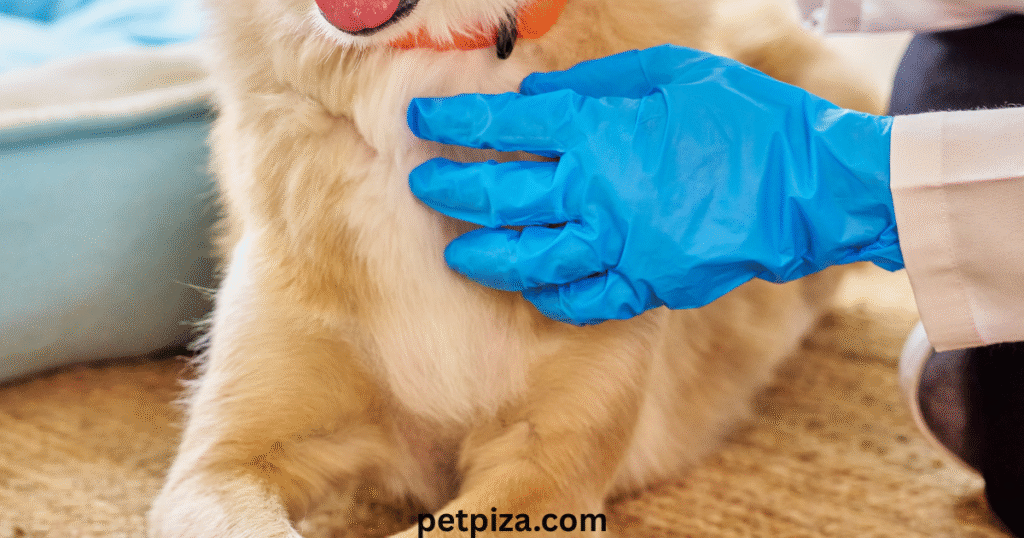
The Foundation: to Preventative Veterinarian Care.
Catching a pet before a potential emergency occurs is much easier. This type of care is essential to keeping a watchful eye on the sometimes hidden dangers posed by health issues.
Vaccinations and Wellness Exams
Every year or every other year, your veterinarian has a systematic approach during the physical examination. The physical check-up assesses the animal’s animal weight, dental condition, breathing, and circulation. At this time also core vaccines (rabies and distemper) and vaccines (Bordetella or Lyme disease) according to the lifestyle of the pet animals to avoid severe conditions is given during this time.
Medications Parasite Control
For your pet’s lifestyle, your veterinarian will recommend the best year-round flea, tick, and heartworm prevention. They also provide professional advice and guidance on controlling obesity and allergies through proper pet nutrition.
When to Go: Urgent Care vs. Emergency Care
How much time to take to respond to a pet health issue is one of the hardest factors to figure out. Most pet hospitals check cases to tell which of them is urgent and which one has the potential to lead to death.
Urgent Care for Pets
Is a condition which is critical and has to be attended to within the shortest time possible. You should be able to have your pet seen on the same day.
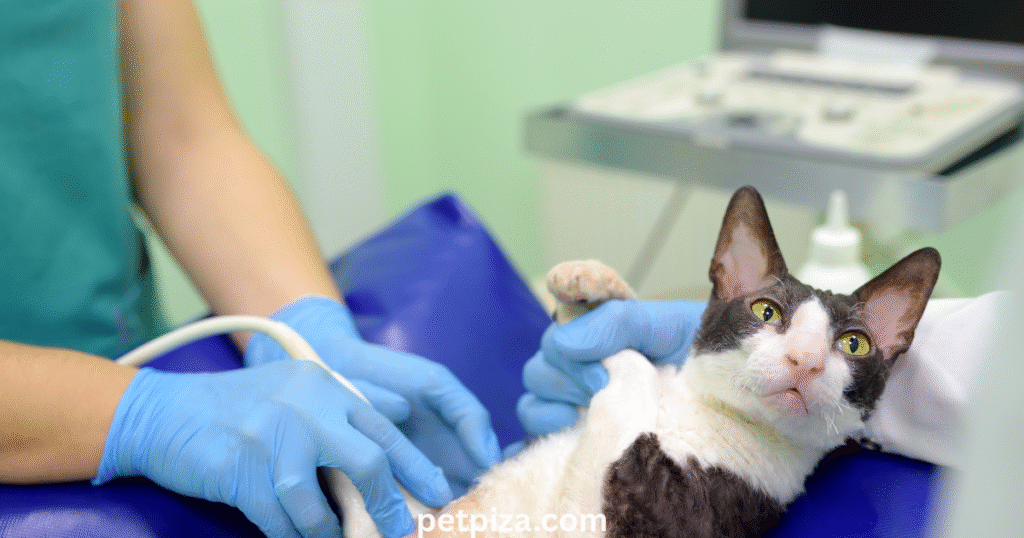
Symptoms Used To Describe Urgent Care Relatively:
- Vomiting or diarrhea that is not bloody
- The act of coughing or sneezing
- The ability to walk with a limp while still putting some weight
- Any sort of small scratches or cuts
- The inability to eat for a couple of days
- The suspected presence of a skin rash or skin infection
Pet Care Next To The Gentle Touch of The Hands
An emergency is a situation where delay in treatment is likely to be detrimental to life or limb. These are the cases that should be seen at a veterinary clinic open all hours, or a pet emergency hospital, without any intermediate stops.
Pet emergency symptoms always requiring immediate treatment:
- Difficulty in breathing, choking, or constant uninterrupted coughing
- Having a seizure or suddenly collapsing
- Catastrophic bleeding or severe injury (being hit by a motor vehicle, or attacked by a dog)
- Whining, shaking, hiding; other signs of advanced pain
- The act of straining to urinate or not being able to urinate and defecate
- The suspected ingestion of poison (chocolate, antifreeze, or some other type of medicine)
- Pale and blue gums with a super fast heartbeat and a pulse that is very weak.
- Having a swollen and hard stomach (indication of bloat)
- The signs of heatstroke (excessive panting coupled with drooling and lethargy)
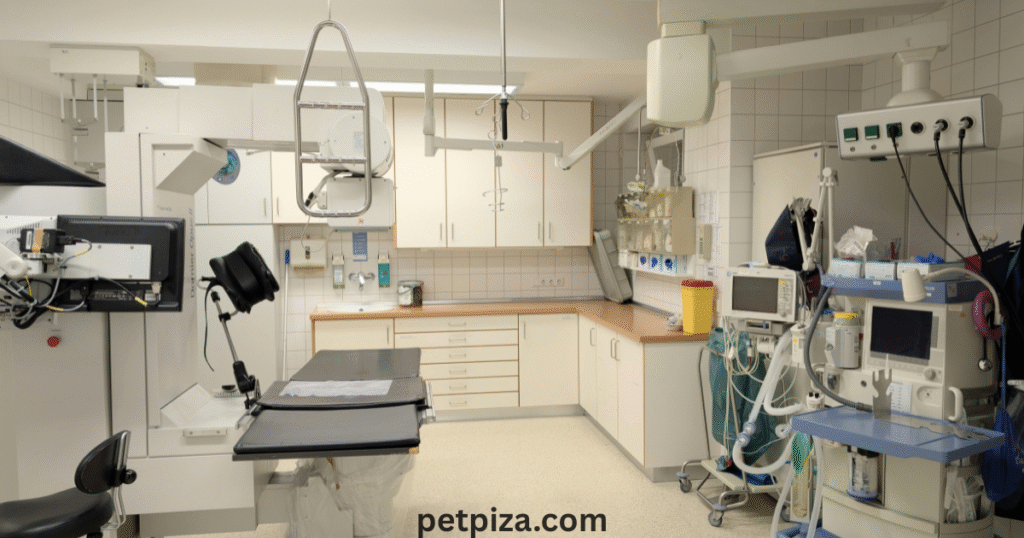
What To Anticipate During The Visit of Emergency to the Clinc
It is very normal to feel overwhelmed in an emergency room. Familiarizing oneself is a good way to keep the anxiety at the minimum.
- Call Ahead: If you can, do give the emergency vet a call while you\u2019re on the way. This helps the team ready themselves for you and guide you on basic first-aid steps.
- Intake and Triage: When you arrive, there will be a veterinary technician on standby who will triage the pet immediately. This means they will evaluate the pet’s health condition immediately and the first ones to be seen will be the most critical.
- Initially, the vet will examine the pet. They will most likely suggest diagnostics such as blood tests and x-rays, or even an ultrasound, to understand the root of the emergency.
- Stabilisation and Treatment Plan: At first, the vet needs to try and make the pet stable. This could be with IV fluids, oxygen, or painkillers. Their main goal is to make the pet stable, after which they will come to you with a treatment plan and the cost.
- Consent and Treatment: Before any treatment is done, you need to give permission for it to be carried out. The support team and medical team will give you information on the pets condition as it updates you.
The Team and Technology Inside Your Pet Hospital
Most veterinary hospitals are now equipped with new technology to offer more care. This allows for more professionals to be on the team for better support and service.
- Veterinarians (DVMs): Most DVMs in a general practice will focus on wellness and routine problems with patients, while the rest will treat them in the ER if they specialize in emergency medicine. Hospitals might also employ board-certified specialists in surgery, internal medicine, and even cardiology.
- Veterinary Technicians: As the ‘nurses’ in the animal care community, these professionals hold a lot of responsibilities. They give IVs, check patients under anesthesia, take diagnostic X-rays, and even assist the Veterinarians in the monitoring and stabilization of patients of high concern.
- In-House Technology: The full-service hospitals will have a complete in-house laboratory to provide rapid results for blood tests and perform cross-sectional imaging, also known as X-rays. The facilities also have portable and stationary ultrasound machines and operating rooms fitted with the latest in surgical monitoring and spaced equipment.
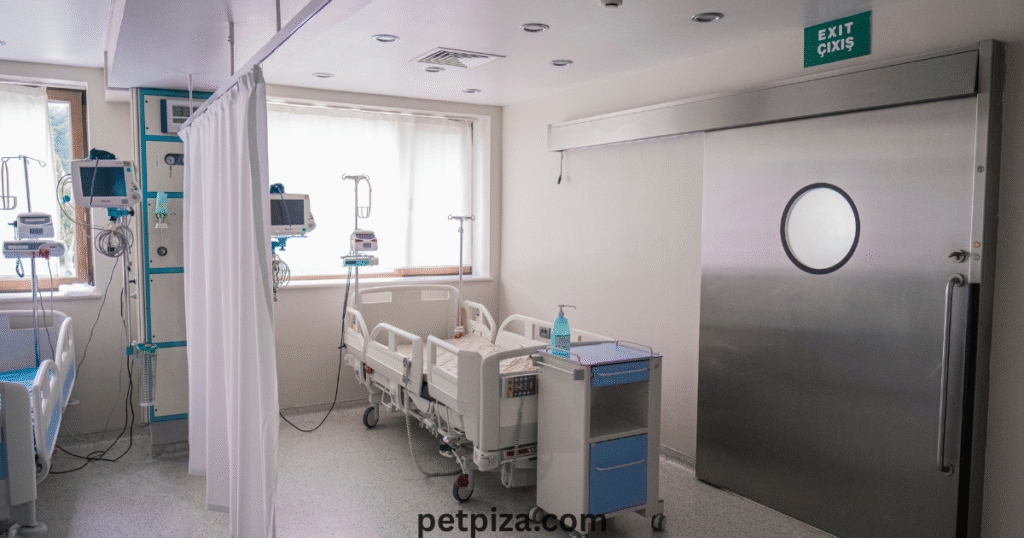
Understanding Costs and Payment
Expenses for emergency care for pets can be very high. This is because they require a lot of hands on work and high tech equipment. Prices should always be communicated clearly.
Estimates and Payment Options
Any hospital worth a visit will take the time to give their patients a complete cost estimate prior to major procedures. Expect the majority of ERs to ask for a deposit, as it is standard practice. This is true for most hospitals, as they accept major credit cards. Payments can be discussed, as some of the hospitals work with CareCredit and ScratchPay to provide patients with financing options.
The Importance of Pet Insurance During Emergencies
In case of emergencies, pet insurance can come in handy. It works by reimbursing you for a portion of your vet bills after you have paid the hospital. In the case of emergencies, having a prior plan can significantly reduce the financial burden, which can, in turn, let you concentrate on your pet’s healing.
Planning for a Pet Emergency
There are a few ways you can prepare now to reduce the chances of future emergencies from becoming disorganized.
Assemble a Pet Emergency Kit
- Store a kit with items you know are important, in a place that is easy to reach.
- The phone number of your veterinarian’s office as well as the phone number for the nearest open animal clinic.
- Your pet’s important medical documents including vaccinations.
- An updated image of your pet.
- A basic first aide kit for pets.
- A hard plastic carrier, a basic leash, a collar with identifying tags, and a strong waterproof bag.
- A basic first-aid kit.
- The pet water and food bowls, and any essential medications.
Record Keeping
Keep a folder in physical or digital form that has important details like microchip number, medications, allergies, and medical history in case an emergency vet has to look after your pet. This can save a lot of time in case of a medical emergency.
Aftercare and follow-ups
Medical vigilance does not stop when a pet is discharged from the hospital. Along with the after care and follow up instructions, the medical personnel will provide a detailed list of medication dosage, maintenance prescribed diet, activity restrictions, and other forms of care and the date and time for a follow up appointment. Compliance with instructions is paramount. The primary care veterinarian will be kept informed of the emergency clinic visit to provide uninterrupted care.

Frequently Asked Questions.
What’s the difference between a pet hospital and a vet clinic?
Although the terms ‘vet clinic’ and ‘vet hospital’ are used interchangeably, a vet clinic is a smaller day time practice whereas a hospital will have more extensive, additional services like emergency after hours care, advanced and in house surgery, and more diagnostic services.
Can I get a same day appointment with a vet for a non emergency?
Most pet hospitals will have a few slots reserved for urgent care. It is always more effective to contact the clinic as early on in the day as possible to increase your chances of obtaining an appointment.
Is pet tele health available?
Yes, Some hospitals provide consultation through tele health for minor problems, follow up care, and Guidance on whether an in-office visit is required. However, it is not used for emergencies.
Your Partner in Pet Health
Your local pet hospital provides invaluable assistance for the well-being of your fur friend at every step of their life. Right from the early days of life, whether it be the first check up or the first visit to the hospital or the scary moments in the advanced age, the team is always there to help. Knowing the exact services required in preparation for the visit, helps to better manage the pet’s health.
Your veterinarian should always be the first point of contact if you ever have any worries about your pet’s health or behavior. Calling them can instantly bring peace of mind, or potentially save a life.


